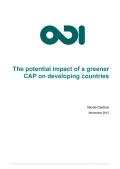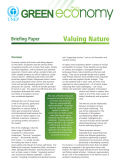
The phrase “Green Economy” was first mentioned in ‘Green Economy Blue Book’ by the British economist Pierre published in 1989. Green Economy promotes economic growth, instead of blocking it in the name of protecting the environment. It advocates changing extensive economic growth with the features of big investment, huge consumption, and serious pollution into intensive economic growth with the features of high efficiency, less resource-consuming, and less waste discharging and calls for harmony between economic and social growth and the proper load that nature can bear. As a new economic model aiming at harmonious development of economy and environment, Green Economy can fully satisfy the requirements of the scientific outlook on development of harmony and people first with energy saving and environmental protection as its goal.
This issue ADB's quarterly magazine explores the concept of green growth: the embracing of environmentally sound and sustainable policies with the need to maintain high economic growth. It features an exclusive interview with leading expert Ashok Khosla, who takes a hard look at the promises and failings of green growth. In other stories, the issue looks at pioneering efforts to deliver medicine through a soda company's distribution network. There is also an article on Cambodia's efforts to pursue green growth.
This guide aims to encourage early dialogue and diagnosis in and by developing countries on what a green economy would mean for their country. Green economy and green growth are hot topics. Definitions, evidence, debates and increasingly, policies, have tended to be dominated by powerful countries and international groups. Several intergovernmental organisations are making it a priority and are announcing policies and programmes; but they each have different approaches. This proliferating work on the international scene provides rich material which can be highly influential in developing countries. However, there are risks of considerable bias if the concepts are not first explored by stakeholders in-country. As the 2012 Rio+20 United Nations Conference on Sustainable Development concluded, green economies should take very different forms according to a country’s diverse capital endowments and needs. As such, green economic policy and investments need to be tailored at both national and local levels.

At a more fundamental level, healthy ecosystems represent the foundation of economic activity and a prerequisite for achieving a green economic transition. Given this, it is essential that the economic value of these services are recognized, demonstrated and captured in the accounts and decision-making of governments, the private sector and consumers
